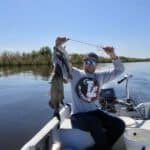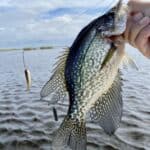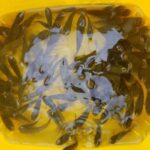Wild shiners can cost as much as $50 per dozen! Ouch!
Well, you don’t have to spend an arm and a leg at the bait shop to fish with wild shiners.
In fact, chances are your favorite lake, pond or river has a population of shiners ready to be caught!
Table of Contents
How to Catch Wild Shiners
There are 3 main methods to catch wild shiners. A cast net, hook, and line, or fish trap. Let’s go over each method below:
Cast Net
The cast net is the most effective way to catch wild shiners because it covers a large area and is very efficient at catching a lot of fish in a short amount of time.
After you chum up an area and see shiners, simply approach quietly and throw your net.
Aim your throw for the center of your ‘chum zone’ and allow the net to sink fully to the bottom. Slowly pull in your mainline and voila! If your lucky you’ll see the tell-tale sign of ‘silver flashes’ in your net!
After 1-2 casts, move to your next chum zone and repeat.
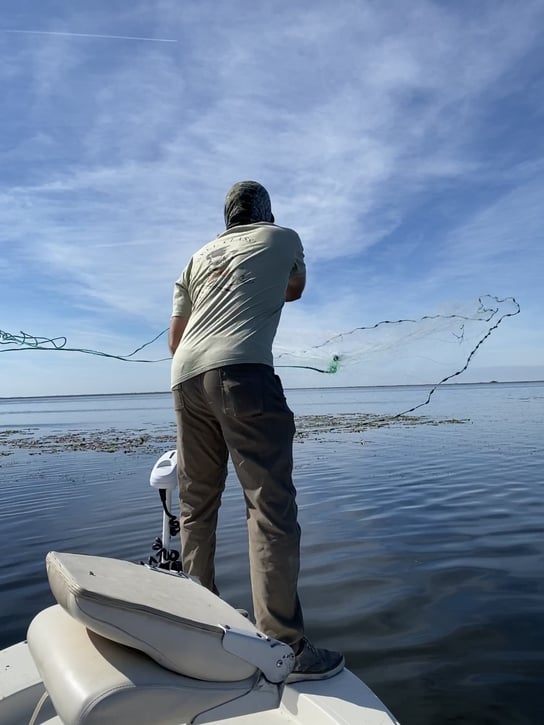
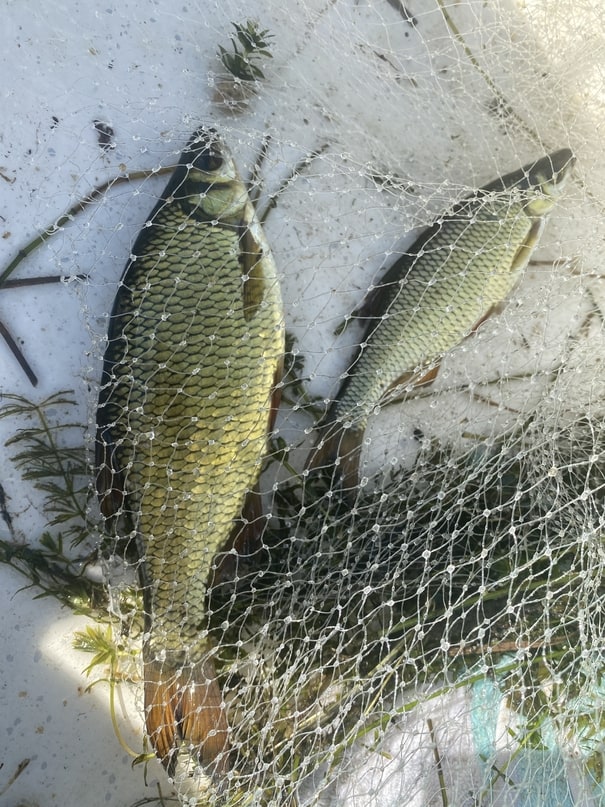
Hook and Line
The hook and line method of catching wild shiners can be a lot of fun.
To do this simply bait an area as described above. Next, you’ll want to set up a shiner rig; this consists of a small 2-4 lb test line and a very small hook such as a #14 wire hook on an ultralight rod.
SIDE NOTE: This is a form of Micro Fishing! It’s a super fun and addictive way to add more species of fish to your life list.
For bait, you can try a small piece of red worm, grass shrimp, bread ball, and even raw biscuit dough.
Don’t worry about a split shot or bobber, cast into the area and let your bait fall naturally with the rest of the chum. When you see your line ‘twitch’ you have a bite, pull up, and voila!
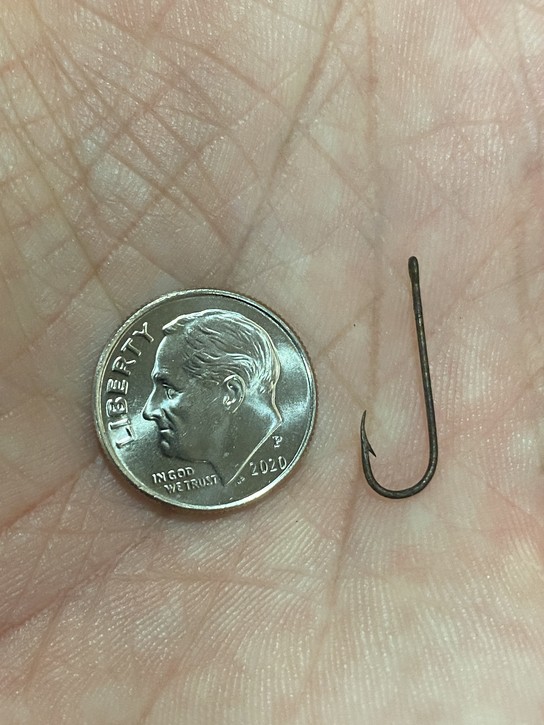
Fish Trap
The fish trap method of catching shiners works great if you have access to a lake, pond, or dock to leave a trap overnight. Numerous fish traps can be purchased online.
Simply bait the trap and place it in the same area as you would normally catch shiners.
Try baiting the trap with a durable dough-like bait such as a bagel. Break it up into a few big chunks. You can also chum the surrounding area to attract more fish.
Check the trap after a few hours or the next day and you should have plenty of bait for a great day of fishing.
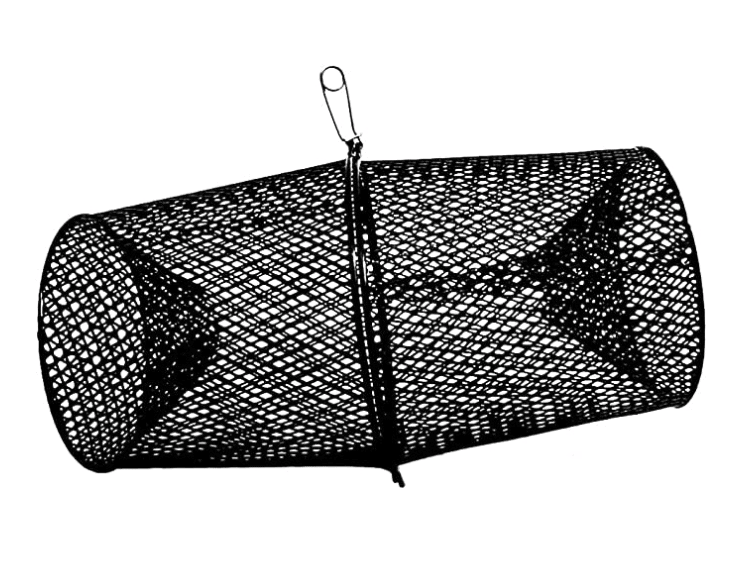
Locating Wild Shiners
Understanding what type of habitat shiners like is the first step to catching your own. Wild shiners are a prey fish for many animals including eagles, ospreys, alligators, otters, snapping turtles and of course gamefish.
So it’s no secret that shiners like to spend their time around cover. They need an easy place to escape from all the predators!
This cover can be things like lily pads, hydrilla, milfoil, cattails, docks, stumps, and other weedy vegetation.
The key is locating this cover and finding shallow and sparse openings where you can entice the shiners out into the open with a ‘chum’.
Here are some features to look for at your local lake, pond or river:
- Water depth 8 feet less.
- Accessible by boat or from shore.
- Structure or cover nearby.
- Small openings or ‘pockets’ to chum fish.
- Other bait nearby such as minnows, grass shrimp and insects.
Here is an example lake and what to look for:

Golden shiners are omnivores, meaning they eat both plant life (filter-feeding) and small invertebrates such as fish and insects. This makes them particularly easy to ‘chum’ out into the open.
This ‘chumming’ method attracts fish from the dense cover and concentrates them into an area where you can catch them with a cast net, hook, and line or a fish trap.
It works very well and you may be surprised at how many shiners live right under your nose.
Preparing the area with chum (fish attractant)
Once you find an area that looks promising, prepare the area by chumming it up with an inexpensive attractant. Almost any grainy, doughy, or bread-like food can work to attract shiners, such as:
- Dog food or cat food
- Corn meal
- Chicken feed
- Livestock grain (Hog Feed)
- Old Bread, biscuits or crackers
- Oatmeal
- Even cereal!
The secret is preparing the attractant before throwing it out into the water. You want the attractant to be the consistency of play-dough. To do this, simply add a bit of water and mix it together.
Use your hands to mash it all up! This will make for a dense ball that will sink to the bottom. Otherwise, your chum will sit on the surface and simply float or drift away with the wind and current.
You want to concentrate the fish in a specific area. Adding water to your attractant makes it dense, so it sinks and as it falls it will dissipate tiny particles of food throughout the water column.
That is a dinner bell for shiners and other baitfish!


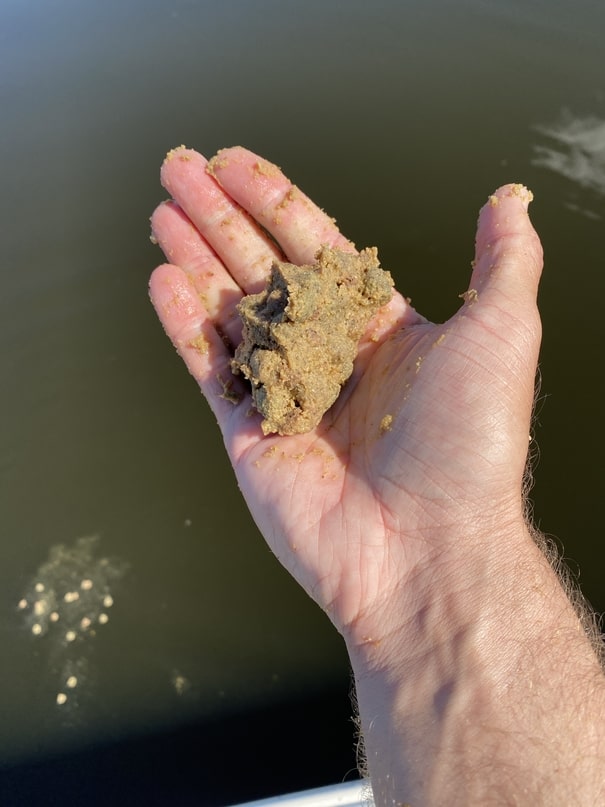
You’ll need to give each area time to attract the shiners. So find a few different areas to chum. Mark them with your GPS, or a landmark nearby.
Once you chum the first area, go to the next one and chum it up.
Do this a few times, and by the time your finished chumming it should be about 20-30 minutes to go back to the first area and start catching!
This will give the shiners in the area to come out of the cover and feed in and around your attractant.
About Wild Shiners
Wild shiners are premium baitfish found throughout the central and eastern United States and Canada.
These small fish from the minnow family are a valuable source of forage for many species of wildlife, including popular game fish such as Largemouth Bass, Striped Bass, Walleye, Catfish, and even panfish such as Crappie and Perch.
They inhabit freshwater lakes, rivers, ponds, ditches, and streams. Wild shiners can grow up to 12 inches in length and females lay between 100,000-200,000 eggs per spawn. Due to their size, shiny color, and natural scent they are a fantastic choice when it comes to live bait!
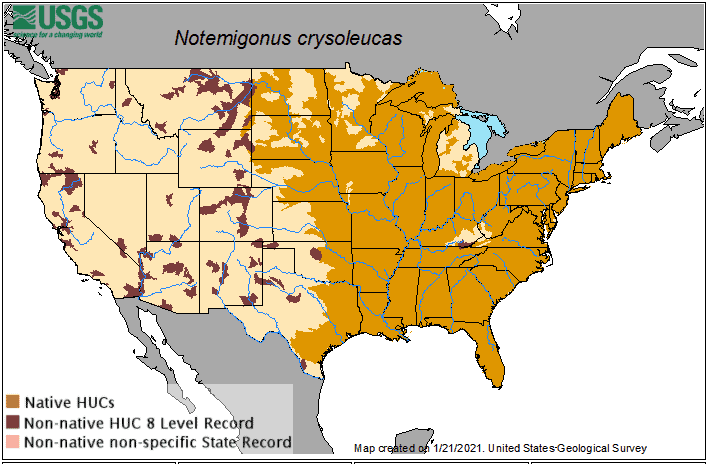
What is the Difference Between Wild Shiners and Domestic Shiners?
Wild shiners, otherwise known as the Golden Shiner (Notemigonus crysoleucas) is a native baitfish in the minnow family that naturally occurs throughout the United States.
These wild shiners are often caught by commercial fisherman and re-sold to bait shops as a premium baitfish for anglers.
They can be very expensive, but make no mistake about it they are superior to their domestic counterparts when it comes to liveliness, action, and quality!
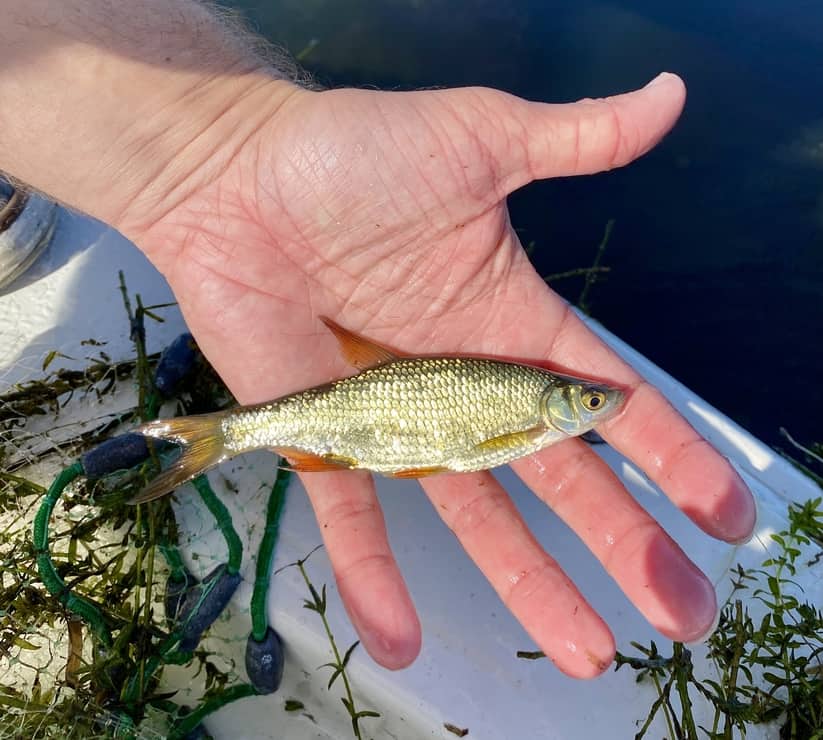
Domestic shiners are farmed or pen-raised fish that are bred in mass production quantities and then shipped to bait shops all over the United States. Don’t get me wrong, domestic shiners can absolutely catch bass!
But you will often find that domestic shiners are more delicate, and they lack the scent and ‘fear’ of predators which is very important when fishing for big bass! Domestic shiners are good, but wild shiners are fantastic!
Related: Minnows vs Shiners: Understanding The Difference
How To Keep Shiners Alive
So after you’ve caught wild shiners, how do you keep them alive until you’re ready to fish?
- Keep them cool! Shiners prefer cold water and do not like direct sunlight. Use a bucket with a lid to keep them from jumping out, and keep them out of the direct sun.
- You can cool off the water temperature by adding a small bag of ice cubes or even submerging the bucket into cold water for a few minutes. You should aim to keep the temperature between 55-65 degrees Fahrenheit.
- Don’t overcrowd them! Like any fish, they can get overcrowded and compete for oxygen. Depending on the size of your shiners try and keep them to a ratio of 3 fish per gallon. For example, if you have a 5-gallon bucket this should adequately support 15 average-sized shiners.
- Keep them aerated! This is the most important part of keeping your shiners alive. Use a battery-powered aerator, a water circulator, or a livewell pump to keep rich oxygen in the water.
- Keep them fed! If your only planning on keeping your shiners alive for 24 hours or less, don’t worry about feeding them. But if you intend to keep them alive for longer, throw in a small piece of bread or pinch of fish food once every other day.
Now go catch some wild shiners!
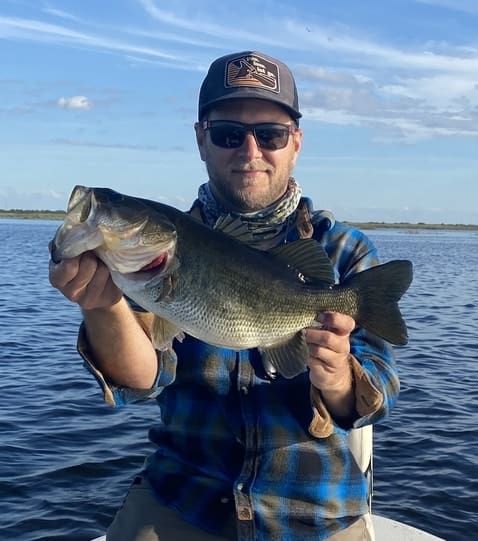
Ask almost any bass fisherman and they will tell you nothing beats a large wild shiner as the best live bait to target big bass. But they are also a great bait for catching big catfish, walleye, muskie, pike, and stripers.
They can be fished dead or alive, as cut bait or whole. They can be free-lined, trolled, fished on the bottom or under a cork. Catching wild shiners is fun, and rewarding…besides who wants to pay $50 per dozen for bait?
See Also: How To Hook A Shiner (5 Easy Methods!)
NOTE: Always consult with your state wildlife and fish agency on the laws regarding the use of cast nets, fish traps, and chumming. Tight lines and happy fishing!
If you haven’t guessed yet, I love fishing and everything about it!
To learn more about why I started Panfish Nation, visit the About page and follow along on Social Media:


Download a copy of my FREE Lure Color Selection Chart & Knot Guide!
Stay up to date with fishing reports, tackle reviews, industry news, and much more! We respect your privacy, unsubscribe at any time.

